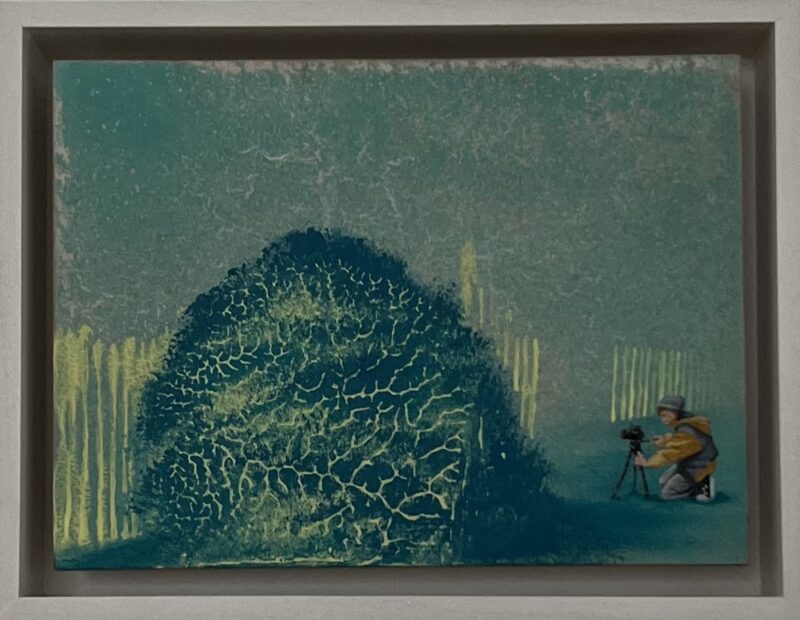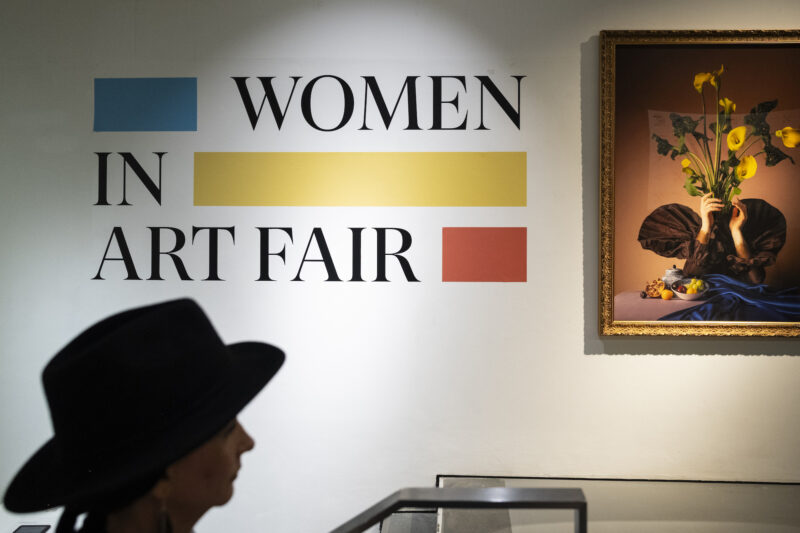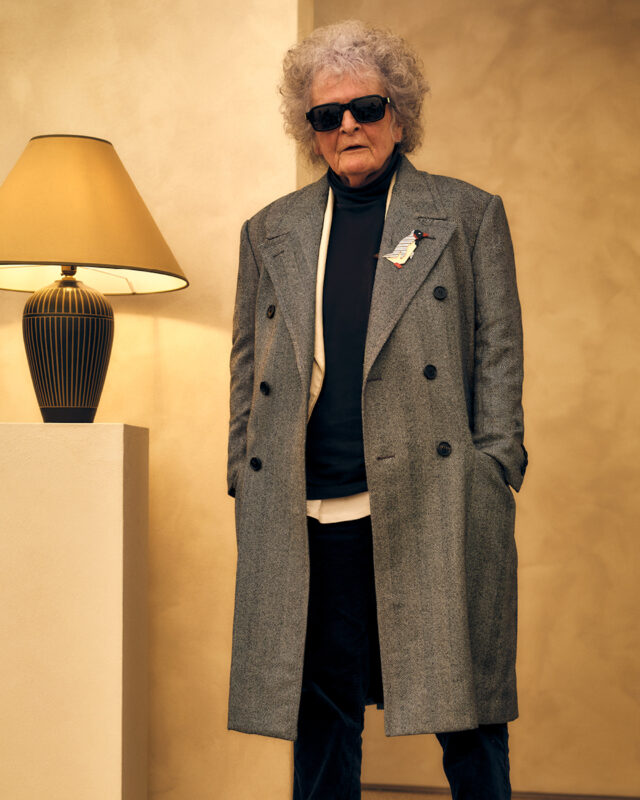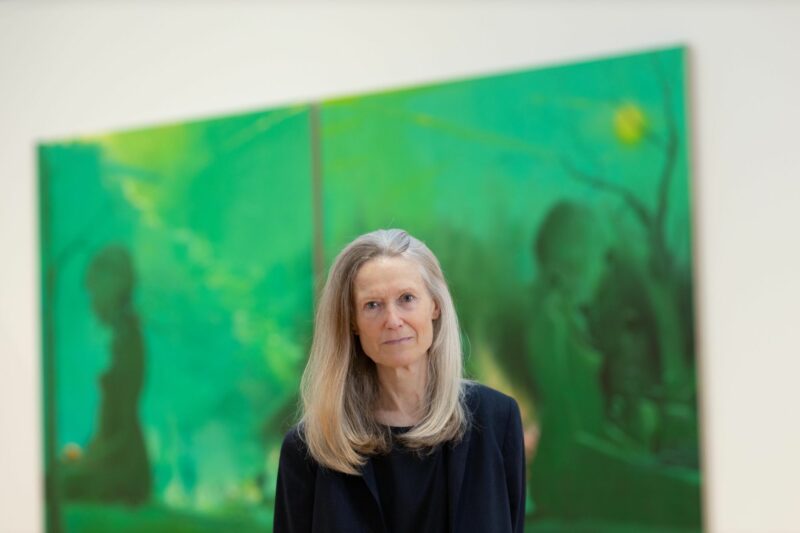Lee Sharrock picks her standout artists at Frieze Masters, the more tranquil antidote to the bigger, brasher Frieze London.
Frieze Masters is a unique art fair that showcases artworks spanning a vast period of six millennia. It’s a rare treat to be able to find antiquities juxtaposed with Old Master paintings and illuminated manuscripts, alongside modern masters such as Chagall, Picasso and Freud.
The return of Frieze London and Frieze Masters after the pandemic involves a Covid-19 clearance wristband after proof of vaccination, and timed slots, which means that everyone can feel at ease once inside and the venue doesn’t feel overcrowded, giving it the feeling of a museum.
Masters features presentations by 130 galleries from around the world, making it more manageable than Frieze London with more than 160 galleries showing. A visit to Masters offers a condensed lesson in art history, as well as an opportunity to discover artists from all over the world. My highlights were Japanese gallery Shibunkaku and South Korean Gallery Hyundai, whose elegant displays chime perfectly with the tranquil atmosphere of Frieze Masters, as well as some captivating women artists showing at Luxembourg + Co and Galleria Massimo Minini.
The ‘Spotlight’ section curated by The Drawing’s Center’s director Laura Hoptman features avant-garde pioneers from across the globe, while Fitzwilliam Museum director Luke Syson has curated a new section named ‘Stand Out’, which breaks down the traditional boundaries between art forms such as design and sculpture.
Here is my Top 7;
- Group show at Shibunkaku (A9)
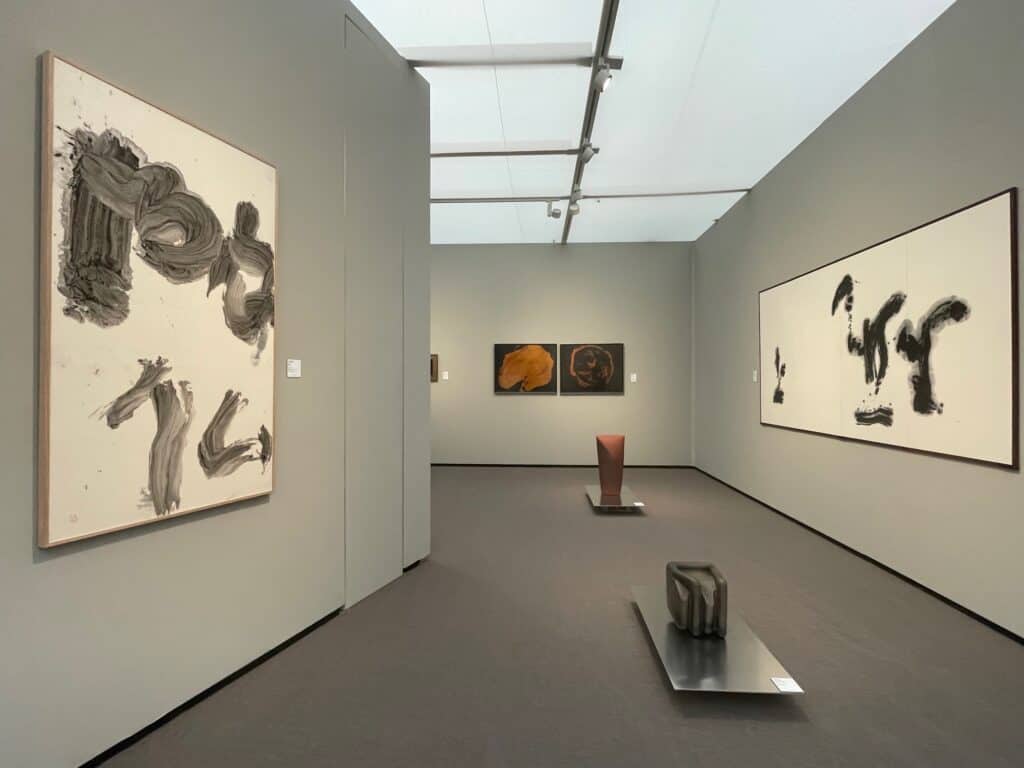
Shibunkaku gallery have come all the way from Japan to Regent’s Park with an exquisitely curated display of Eastern and Western artists including avant-garde calligraphers Morita Shiryu and Inoue Yuichi, and prominent Japanese female artists Shinoda Toko and Miyawaki Aiko. Also featured are ceramicists Yagi Kazuo, Suzuki Osamu and Miyanaga Rikichi, alongside iconic works from leading 1960s artists including Joan Miró, Lucio Fontana and Robert Motherwell. Shibunkaku’s display celebrates the rich artistic heritage of Japan, and the cross-cultural influences and exchanges between Eastern and Western artists
- Seung-Taek Lee at Gallery Hyundai (B2)

South Korean Gallery Hyundai are presenting the beautiful ‘non-sculpture’ of Korean Avant-garde artist Seung-taek Lee (b. 1932). His work draws on folklore and Korean Shamanic traditions, and he often uses natural objects such as paper, stone and rope to disrupt artistic conventions.
- Giosetta Fiorini at Luxembourg + Co (D3)
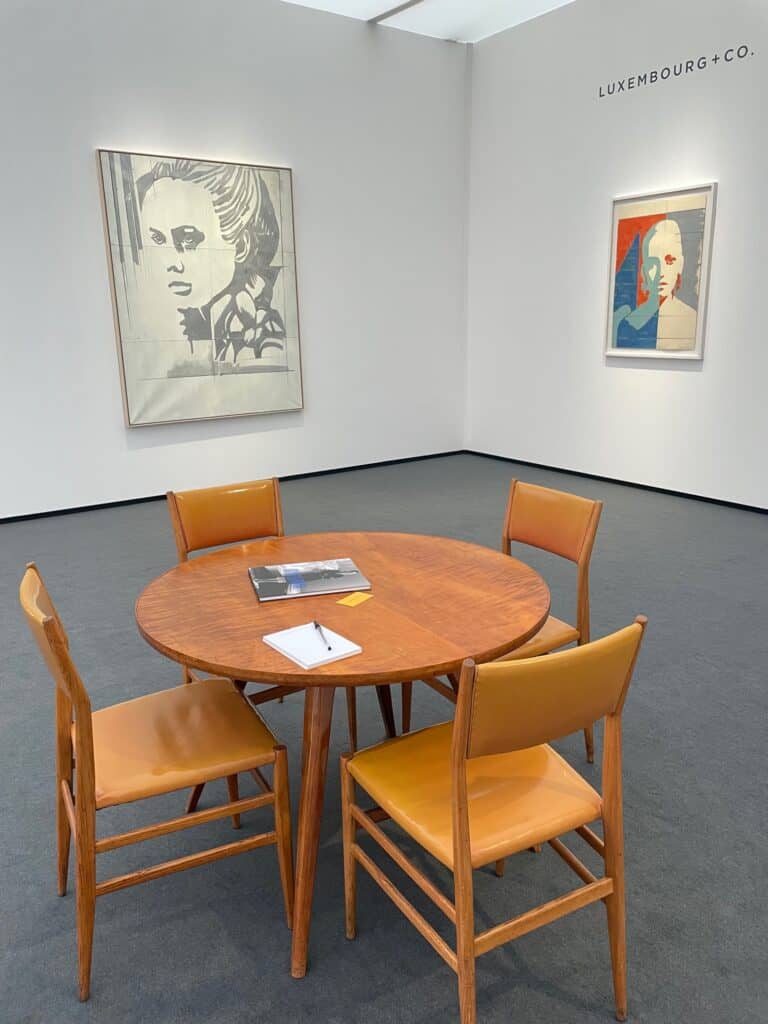
Discovering the paintings of Italian Post-war artist Giosette Fioroni for the first time was a highlight of Masters for me. Luxembourg + Co are exhibiting Fioroni’s 1960s portraiture in ‘Alter Ego’ here and also at their Savile Row gallery in central London.
Giosetta Fioroni (b.1932, Rome) is often associated with the emergence of Pop Art in Italy and the Roman Scuola di Piazza del Popolo group, which also included Mario Schifano, Tano Festa and Franco Angeli. Her portraits feature Bardot-esque women evoking the era of the swinging 60s. Her muses resemble starlets from a Fellini movie, while she sometimes uses star motifs and a blue, red and white palette which evokes American pop art of the same period.
- Carla Accardi and Sheila Hicks at Galleria Massimo Minini
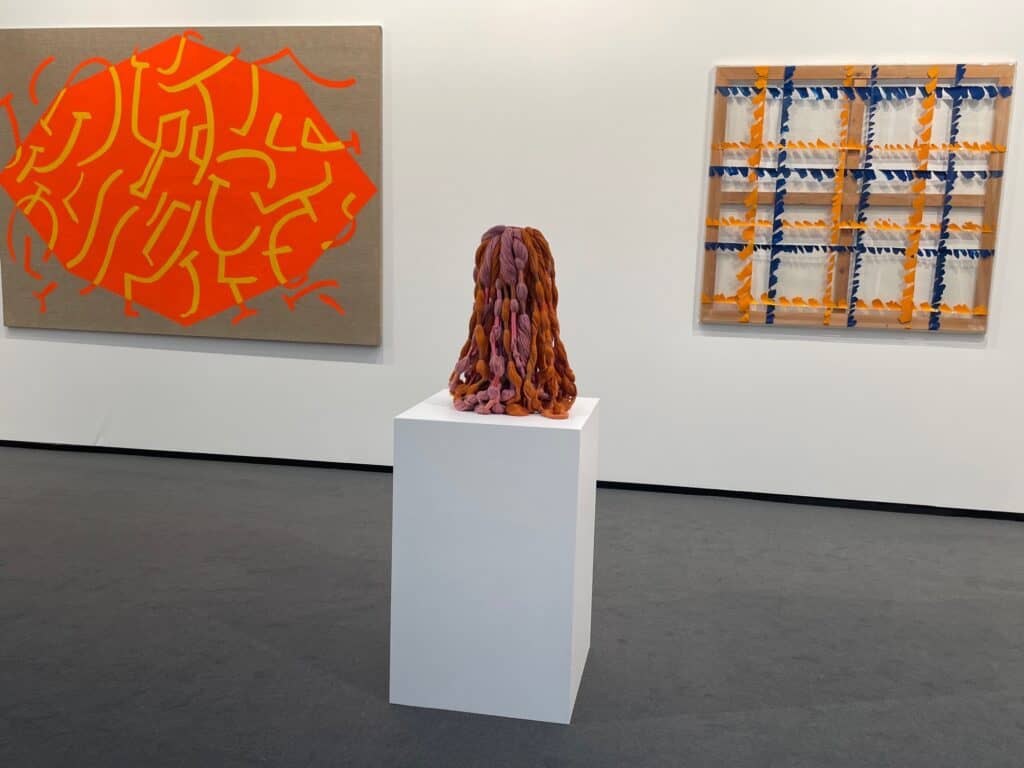
Sheila Hicks’s (b. Hastings, Nebraska, 1934) life as ‘a tissue of threads woven together on purpose or through chance, fertile encounters.’ While decades have passed since Lévi-Strauss offered this overview, her words remain continually relevant. Since the 1970s, Hicks has established herself as one of the most distinctive artists of her generation. Working to manoeuvre colour, texture and form, the Paris-based artist has produced a rich and complex body of large-scale bas-reliefs, sculptures and installations that indulge in material tactility and the collective experience of space.
Born on October 9, 1924, in Trapani, Italy, Carla Accardi trained as a painter at the Accademia di belle arti, Florence, before moving to Rome in 1946. Accardi quickly became part of the inner circle of the Art Club and was a frequent visitor to Pietro Consagra’s studio. There she met the artists with whom she would establish the influential postwar group Forma 1 (Form 1, 1947–51): Consagra, Piero Dorazio, Mino Guerrini, Achille Perilli, Antonio Sanfilippo (whom she would marry), and Giulio Turcato. The group’s manifesto, which Accardi signed in 1947, called for reconciling Marxist politics with abstract art. The group’s first exhibition occurred in Rome in 1947, and Accardi’s first solo show soon followed, in 1950 at the Galleria Age d’or, Rome. Her early paintings consisted of interlocking geometric forms.
- ‘American Painting’ at Waddington Custot (G2)
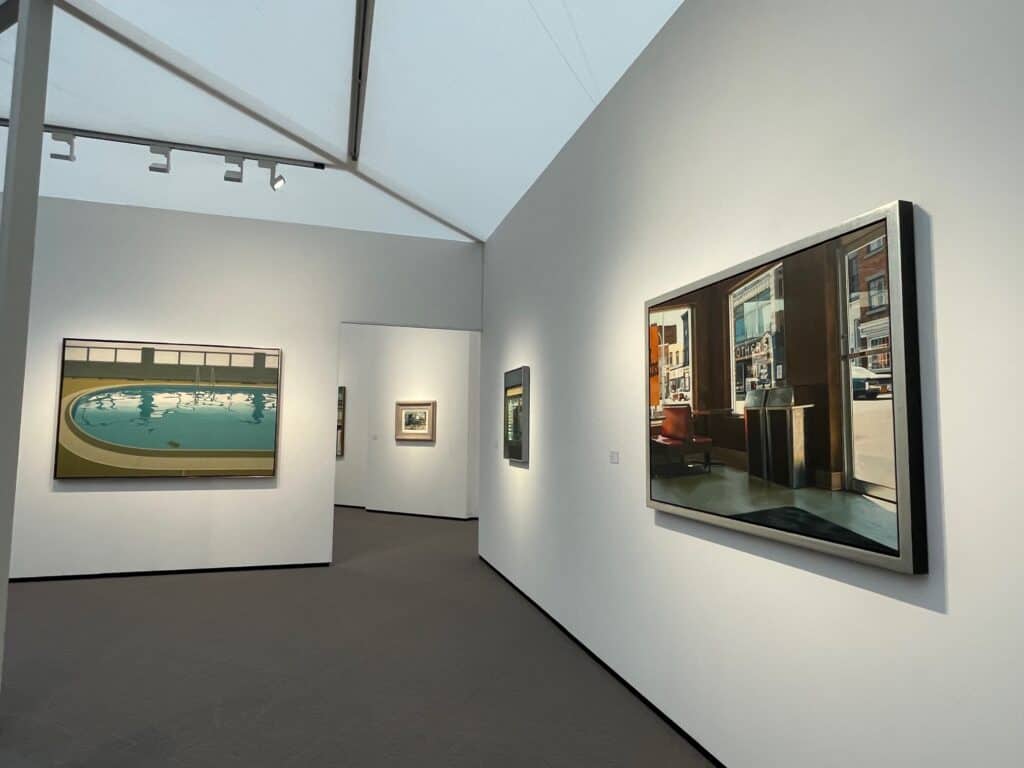
Waddington Custot gallery is exhibiting a selection of striking photorealist paintings from a private collection by some of the most iconic American 20th Century artists. The display features artists working in the United States from the late 1960s and 1970s including: John Baeder, Robert Cottingham, Don Eddy, Richard Estes, Ralph Goings, Ron Kleemann and John Salt. Robert Cottingham’s 1969 ‘Pool’ captivates and John Baeder’s ‘Roarin Rohrer’ (1972) evokes a bygone era of 1950s roadside diners.
Waddington Custot presents a selection of iconic paintings by artists working in the United States from the late 1960s and 1970s, including: John Baeder, Robert Cottingham, Don Eddy, Richard Estes, Ralph Goings, Ron Kleemann and John Salt. The paintings come from a private collection that has taken over a decade to build.
- Gagosian ‘Material Process’ (C2)
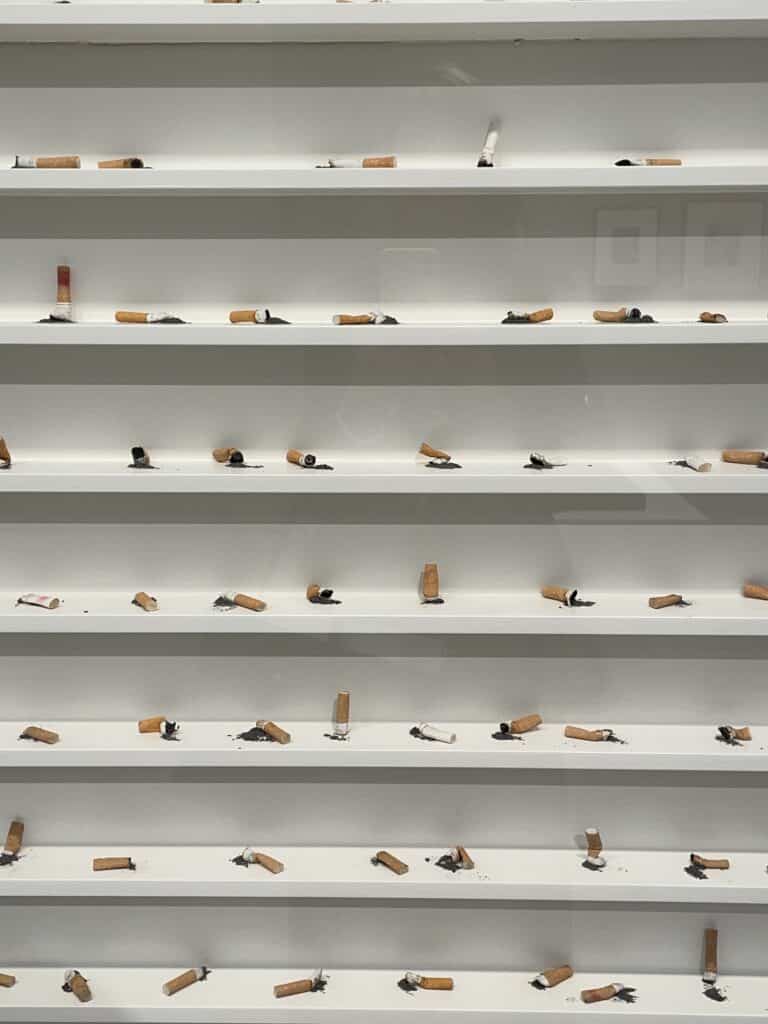
Gallery behemoth Gagosian showcases its heavyweight artists in Material Process, which features 20th Century British sculpture from Henry Moore, Anthony Caro and Rachel Whiteread, alongside Damien Hirst’s cigarette stub installation and macabre pickled calf sculptures.
7. Thaddaeus Ropac (F6)

Thaddaeus Ropac gallery are exhibiting a ‘re-staging’ of Rudy Fuchs’s seminal Documenta 7 exhibition of 1982 including works by Gilbert & George, Emilio Vedova, Georg Baselitz, Robert Mapplethorpe, Arnulf Rainer and Joseph Beuys, whose centenary we are celebrating this year. At the time, Fuchs’s curatorial approach of placing contemporary artworks alongside classicist sculptures from museum collections in Kassel, and emphasising the relationship between old and new, was radical. Fast forward to Frieze Masters in 2021 and it seems perfectly natural to draw a line between old and new masters.

